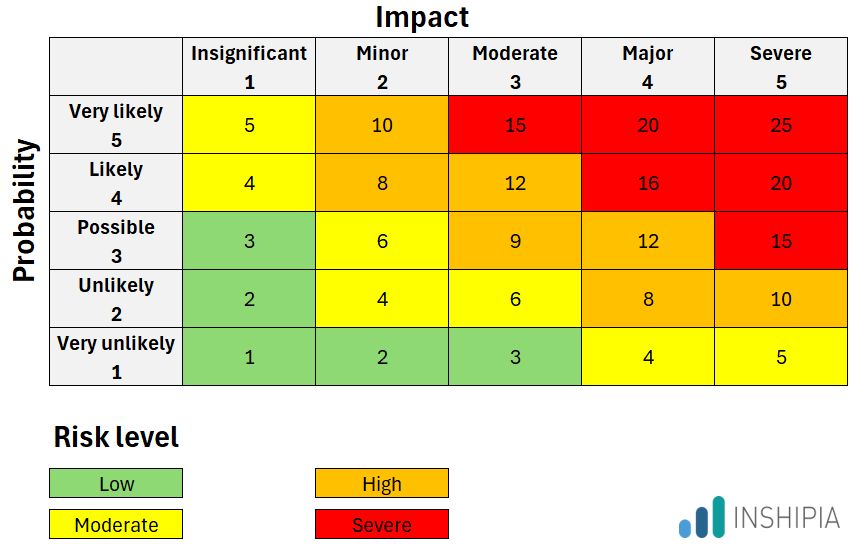Why cyber risk management is a business priority in 2025?

In the digital age, cyber attacks are not just IT problems - they are business risks. A single system outage, data leak or ransomware attack can cost millions of dollars. That's why cyber risk management is now a strategic issue for all companies.
Individual risks - individual protection
Every organisation is different. They use different tools, systems and services - so they have different attack surfaces and threat profiles.
Effective cyber risk management is personalised. The following international frameworks can help:
- ISO 27001 – Information Security Governance Standard
- NIST CSF – US cybersecurity framework
- GDPR – Data Protection Regulation, with particular emphasis on the legal consequences of data loss
How to quantify cyber risk?
"How can you measure something that is so complex and constantly changing?"
The answer is a proven formula:
Cyber risk = Probability × Impact
Basic steps in risk analysis
- Asset identification: customer data, intellectual property, business continuity systems
- Threat and vulnerability mapping: phishing, ransomware, insider abuse
- Probability estimation: historical data, threat intelligence, expert opinion
- Impact assessment: downtime, data loss, fines, reputational damage
Cyber risk matrix
This matrix helps you prioritise your tasks:
| Low impact | Medium impact | High impact | |
|---|---|---|---|
| Low probability | Acceptable risk | Mitigated risk | Danger to be aware of |
| High probability | Mitigated risk | Critical risk | Immediate intervention needed |
Cybersecurity is not a project, it is a process. The digital world is constantly changing - and so are the threats. That's why cyber risk management requires regular attention and updates.
Transparency
Awareness
Foresight

